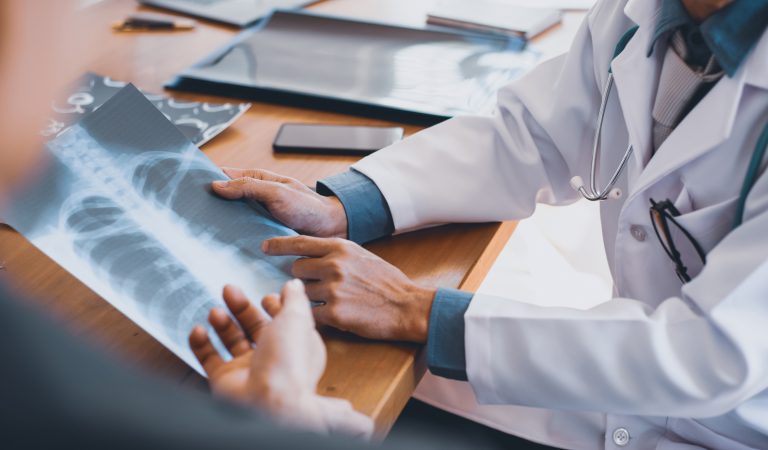What is Spinal Stenosis?
Spinal stenosis is defined as a narrowing of either the spinal canal or the small spaces nerve roots use to exit the spine. This constriction can create painful compression on your spinal cord or the nerve roots. The most common cause is osteoarthritis — a condition that wears down the cartilage cushioning the joints in the spine. Read on for more information about the spinal stenosis diagnosis process and the treatments available to ease your symptoms and help you get back to your daily routine.
Diagnosing spinal stenosis should always involve a full evaluation conducted by your doctor. While many people may read about the symptoms of spinal stenosis and assume they have the condition, self-diagnosis can be tricky because spinal stenosis symptoms like numbness, weakness, and tingling can resemble symptoms of other conditions.
Diagnosing Spinal Stenosis
If you are experiencing pain in your neck or back, reach out to your doctor immediately. Properly diagnosing spinal stenosis is the first step to getting effective treatment. When seeing your primary care doctor regarding a potential spinal stenosis diagnosis, you will generally start with a thorough medical history and physical exam performed by your doctor.
The primary way of reaching an exact diagnosis for spinal stenosis is with imaging tests. These can determine the location and extent of your nerve compression. Examples of imaging tests include:
- X-ray — which is basic imaging that is able to detect some conditions on a broad level
- MRI — which is a magnetic resonance imaging test that can provide a more detailed look at spinal stenosis
- CT scan — which is a computer-assisted X-ray that can provide a cross-sectional view of the spine
- Myelogram — which is a kind of imaging that uses dye to provide a high-contrast image, making conditions easier to detect
Get Your Life Back
Conservative treatment options prescribed by a doctor may include over-the-counter medication to reduce pain and inflammation, as well as strengthening and stretching exercises. Many patients do not need surgery to find relief from symptoms.
On occasion, several weeks and months of these treatments do not bring the expected results of reduced pain and increased mobility. If you have been recommended for surgery but have doubts regarding the risks involved with traditional open-back surgery, there are other options available for lasting pain relief.
Surgery with BEST Health System
BEST Health System is an outpatient spine and orthopaedic ambulatory clinic. Our dedicated surgeons specialize in minimally invasive procedures. Unlike traditional surgery, our procedures require a less-than-one-inch incision and patients can enjoy a significantly shorter recovery time. Contact BEST today to learn more about our minimally invasive procedures.
